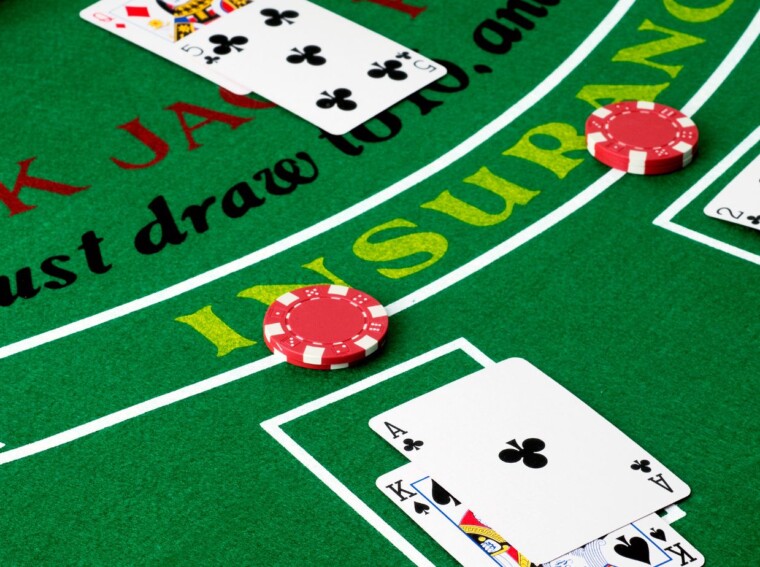Getting Started
Las Vegas has a special place in my heart-I’ve visited about 20 times and always find myself at the gaming tables. My casino adventures have taken me around the globe, including an unforgettable trip to Macao.
If you play online casino games, then you need to know how to get a birthday bonus for more profitable play!
My gaming journey began in high school when I was 16, playing countless online poker tournaments. Today, I’m hooked on Blackjack for its strategic depth and because the house can be beaten.
Card counting is what makes that possible-and I’m here to break down the process for you.
First things first: card counting isn’t against the law. It’s simply a matter of sharp focus and quick arithmetic-nothing criminal about that! If a casino notices you’re using this technique, there’s no threat of violence like in Hollywood movies; at worst, you’ll be asked not to play anymore, and neighboring casinos might follow suit unless they’re looking to lure you in themselves.
Catching a card counter isn’t hard-even before they hit big wins, their betting patterns give them away.
I don’t use traditional card counting myself. Instead, I’ve devised an easier method that allows me to keep track even when friends distract me or cocktails are flowing.
I’ll begin by explaining how standard card counting works. Then, I’ll introduce my custom, simplified system.
The Conventional Card Counting Method
The classic approach is straightforward once you get the hang of it.
You maintain a mental tally-the running count-to track how many high cards (Tens and Aces) remain in play.
Whenever an Ace, King, Queen, Jack, or Ten comes up, subtract one (-1).
If you see a 7, 8, or 9, do nothing (0).
Spotting a 2, 3, 4, 5, or 6? Add one (+1).
Here’s an example using a single deck: Let’s say these cards are drawn-5, 2, K, A, 10, 9, K, J, 8, 7, Q. The count ends up at minus four (-4).
This is how it looks step-by-step: add one for each low card (5 and 2), subtract one for each high card (K, A, 10), ignore neutrals (9), continue accordingly-your end total is -4.
When several decks are used-say eight-you’ll need to convert your running count into a “true count” by dividing by the number of decks left. In this scenario: -4 divided by 8 equals -0.5.
A negative score favors the dealer; positive numbers signal an advantage for players.
If your true count is positive, ramp up your bets since you’re more likely to land blackjacks. When it’s negative or zeroed out-play conservatively and wager small amounts.
Most casino-goers stick with similar bet sizes throughout; sudden large bets are telltale signs someone’s tracking cards closely.
Easier Card Counting: My Modified Method
I admit-I can’t keep perfect mental counts amid distractions like chatting friends or lively casino floors. My solution? Use my chips as visual reminders instead of relying solely on memory.
Each time five high cards (10s or face cards/Aces) appear during play, I shift one chip over as a marker-helping me estimate how many valuable cards have already appeared without constant calculations in my head.
This way I’m mainly tallying Tens and Aces seen rather than getting bogged down by every single card dealt.
If I stack ten chips on the side-that signals fifty high-value cards have shown up so far.
The next step is gauging how much of the shoe remains-a quick glance usually does it since most casinos let you view what’s left inside the dealer’s shoe.
A count of fifty might be dreadful if only sixty cards were dealt so far but fantastic if two hundred cards have come out-it all depends on context!
The Math Behind It
Tens and Aces make up roughly five out of every thirteen cards-or close to 38%. If your count shows more than this percentage have appeared early on-that means fewer chances for strong hands ahead. If fewer have shown up compared to what would be statistically normal-that’s when your odds start looking great.

Your memory won’t always serve perfectly under pressure or after distractions-and that’s fine! Whenever you lose track mentally between hands just reset your chip-based count and err on the side of caution until things heat up again.
Simplifying Even Further
Looking for absolute ease? Here’s what I do:
- Tally only Tens and Aces that have been dealt since fresh decks were brought out
- Estimate visually how much of the deck remains in play compared to what started
- If about half the shoe remains and fewer than sixty high cards have been dealt-I increase my wager confidently
- If more than eighty are gone by this stage-I stick with minimum bets as it suggests nothing unusual is happening with the distribution
If automatic shufflers are in use (common outside Vegas), unfortunately no system will help-but as long as physical shoes are visible on the table this method holds up nicely.
Does This Approach Work?
The answer is yes-I walk away ahead around sixty percent of sessions using these conservative hacks. The trade-off? You might miss some hot streaks but gain peace of mind and enjoy yourself far more than obsessively crunching numbers every hand. After all-it should still feel like entertainment!
